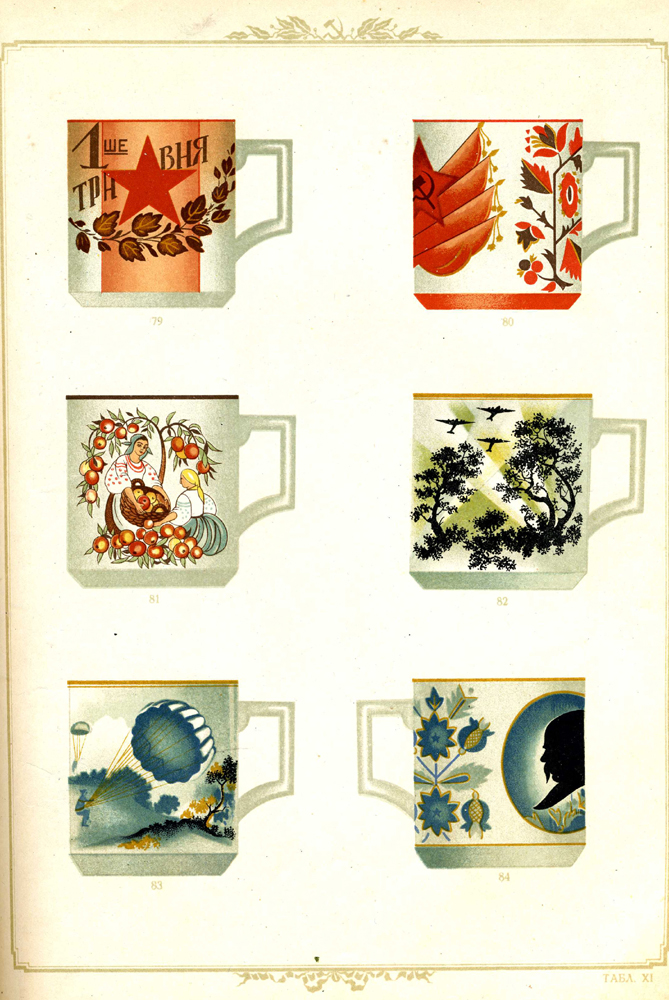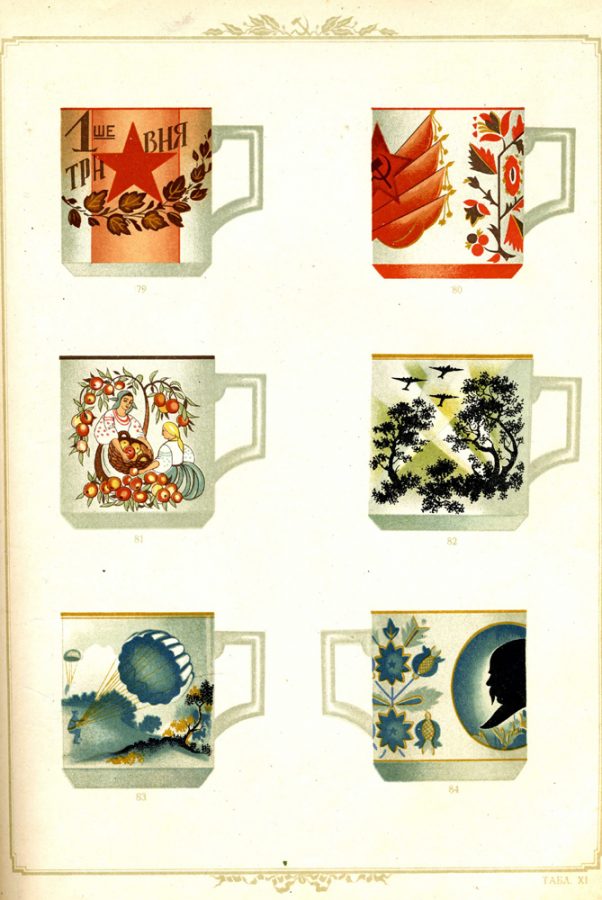This post was contributed by Hirshhorn Museum and Sculpture Garden Library intern Marisa Herandez. The Smithsonian Libraries celebrates its 50th Anniversary with a year-long series of festivities and I remain more »
Tag: Adopt A Book

This extremely rare 1940 trade catalog the Cooper-Hewitt Smithsonian Design Museum Library, Katalog farforu fa︠i︡ansu i maĭoliky, represents the production of not any one company. It is the output of 10 state-owned ceramics factories all over the Ukraine in small towns and villages, after industry was nationalized in 1918. This is a primary source document for the decorative arts and for studying the material culture and political history of the Ukraine and the former Soviet Union.
On November 7, we invite you to join us for an evening celebrating the scintillating collection of Cooper Hewitt, Smithsonian Design Library at our Adopt-a-Book event in New York City. Cooper Hewitt, Smithsonian Design Library is the nation’s premiere resource for books, trade catalogs, serials, pictures, and archival material on design and decorative arts from the Renaissance to the present. The Library features more than 8,000 rare treasures.
Principles of Beauty Relative to the Human Head by Alexander Cozens was published in 1778 by James Dixwell in London. It is a large book measuring 55 by 38 centimeters (21.5 by 15 inches) and is part of the American Art and Portrait Gallery Library collection. It came to the Book Conservation Lab as part of Smithsonian Libraries Adopt-a-Book program.
The content includes printed drawings of women’s heads and their various facial features. For example, there is one page dedicated to different shaped eyes and another dedicated to different shaped noses. The final 17 pages are especially impressive. They are printed with different shaped women’s faces shown in profile without hair. There are 17 tissue paper overlays each printed with a different hairstyle that can be placed over the pages of the women’s heads, allowing the reader to compare hairstyles to see how they look on different shaped faces. It is amusing to see something being done in a book in the 18th century that can still be done on your smartphone today.
“PANIC STRICKEN MULTITUDE FACING SURE DEATH! HUNDREDS WERE DOOMED TO WATERY GRAVES! TERRIBLE HORROR OF THE BRINY DEEP!” Look no further than the title page of the “Memorial Edition” more »
While at the Smithsonian Libraries Research Annex (SLRA) during the second week of my Smithsonian Libraries internship, I was asked to select and research texts in SLRA’s collection for the Adopt-a-Book Program. Adopt-a-Book is an opportunity for bibliophiles to “adopt” a book from one of the Smithsonian Libraries’ twenty-one branches, granting them acknowledgement through a virtual bookplate in the SIL online catalog, SIRIS. Potential donors can view the books up for adoption on the Libraries website, along with a brief history and description of each. In addition to generating revenue, Adopt-a-Book is a great way to tell and preserve the stories of physical texts; as I quickly discovered, each book has a unique, often untapped past.


